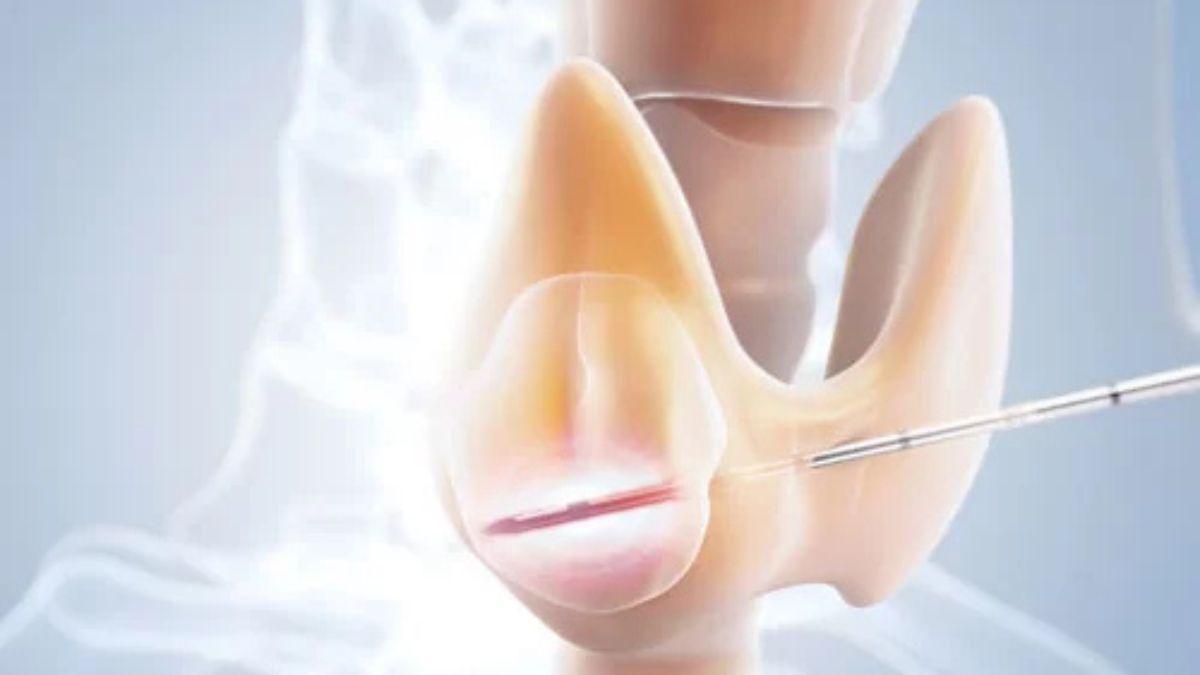HEALTH
Is 35 Too Old to Have a Baby? What You Need to Know

With the ever changing times, our family planning goals have changed too. Many people are now delaying having children until they’ve achieved their personal goals, such as building stable careers, visiting their favourite travel destinations, or waiting to meet the right person. In fact, research has found that the average age of mums in the UK increased to 30.9 years in 2022, which is higher than in previous years. So whether it is your career aspirations, travel goals, or personal situation that’s the priority right now, learning about fertility in your late 30s can help you decide whether putting your family plans on hold is the right decision.
In this article, we’re going to look at the risks, challenges, complications, and benefits of getting pregnant after 35 – which can help you make informed choices about your future family planning. Let’s get started!
Understanding Fertility After 35
Navigating fertility around the age of 35 can be quite a challenging task. This is because of the silent yet known decline in fertility levels for both partners. While the effect of this impacts both genders, for women particularly, age is a crucial factor. Here’s why.
This age-related decline in fertility results in a loss of egg quantity. Women are born with more than 1-2 million eggs in their ovaries but this number gradually declines over the years – with women having on average only 25,000 eggs left by the age of 40. Research (Extent of the problem by Alison Taylor et al.) has also shown that this age-related decline in fertility increases dramatically after the age of 35. The result? Women who want to get pregnant after the age of 35 often face multiple issues, or miscarriages, when trying to conceive naturally.
The age-related decline in fertility also results in a loss of egg quality. This decline in egg quality can cause many different problems. For example, poor egg quality can reduce the chance of fertilisation, embryo formation, and successful implantation. In addition to this, poor egg quality can also increase the risk of miscarriage, genetic issues and long-term health conditions, such as down’s syndrome. So, when it comes to getting pregnant after the age of 35, egg quality is often as much of an issue as egg quantity.
Risks and Challenges of Pregnancy Over 35
While we have already discussed some of the challenges women face when getting pregnant over the age of 35, there are some things that require a more in-depth explanation.
A good starting point would be to discuss the possibility of gestational diabetes and pre-eclampsia. For pregnancies over the age of 35, the risk of developing gestational diabetes is twice as high, when compared to younger mothers. Similarly, the risk of pre-eclampsia is three times higher for women over the ages of 35. With this condition, simply put, the placenta struggles to get enough blood flow. Gestational diabetes and pre-eclampsia both increase the risk of miscarriage, early birth, and potential organ damage.
Secondly, pre-term birth (before 37 weeks) is also quite common for women over the age of 35. This is a major challenge because pre-term birth often causes other problems for the mother and child. For example, the child may struggle with improper formation of organs, breathing issues, developmental delays, and other health conditions. The mother may struggle with low blood platelets, impaired liver and kidney function, increased risk of cardiovascular diseases, and even life-threatening conditions.
One way to potentially avoid these challenges is by opting for assisted reproduction techniques. For example, medical advancements such as egg freezing and IVF enable women to delay their pregnancies until later in life. A specialised fertility clinic in London can provide bespoke treatment services by recommending fertility test for women, which can help you assess your reproductive abilities. Based on these results, your fertility expert can then chart out an action plan that suits your desired family planning outcomes.
The Benefits of Having a Baby at 35+
Yes, there are some risks associated with having a baby after the age of 35. But you still have a good chance of having a successful pregnancy and a healthy child. In fact, there are actually many benefits of having a baby at 35+.
One of the most common reasons people delay getting pregnant is emotional and financial stability. Your emotional maturity and financial stability play an important part in family planning decisions. For example, having children means having the emotional maturity to centre your life around childcare, and having the financial security to provide them with everything they need. These changes take a lot of time, understanding, and money, which is why 35 is often a great time to have kids. By then, most people are settled in their professional and personal lives, and have planned for parenthood. For women specifically, by 35 they have had time to fully explore opportunities for personal growth, and feel more ready for motherhood.
And with techniques such as egg freezing, IUI (Intra-Uterine Insemination), donor eggs and IVF, people now have more control over their personal lives. With adoption services and surrogacy also available – many people can achieve their dream of having a family, at any age.
Tips for Improving Fertility and Pregnancy Outcomes
For those wondering how to improve their fertility outcomes – lifestyle changes are often key. Nutrition, daily hygiene, sleep quality, stress management, and most importantly, exercise, make a big difference to your reproductive potential and overall wellbeing. Positive lifestyle changes can also help prevent weakened immune systems, chronic diseases and even reproductive issues such as PCOS, in some cases. That’s why lifestyle choices, in combination with fertility foods, regular medical check-ups, and sound medical advice, can help improve your chances of conceiving naturally.
Pregnancy after 35 – Still possible
While it’s true that trying to get pregnant later in life can be challenging, it’s important to keep in mind that the majority of women do still go on to have healthy pregnancies after 35, and achieve everything they set out to do. Taking a practical approach towards pregnancy, and working with fertility experts from the get go, can help make things easier for you and your partner. Remember, while age is something to consider, it’s still possible to have a successful pregnancy.
HEALTH
Winter Care for Women: Preventing UTIs and Vaginal Infections

Introduction
Winter and high pollution periods can influence daily habits and natural immunity, increasing the risk of urinary tract and vaginal infections in women. Colder temperatures often lead to reduced water intake, layered clothing, prolonged indoor stays and changes in hygiene practices, all of which may affect urogenital health. At the same time, seasonal stress, lack of sunlight and lowered immunity can make the body more susceptible to bacterial and fungal infections.
Why Does Winter Raise UTI and Vaginal Infection Risk?
Winter can affect daily habits and body defences, increasing infection risk. The following factors contribute to this rise.
- Behavioural Drivers: People may drink less water in cold weather and delay urination, increasing bacterial concentration in urine. Tight, non-breathable clothing and dampness after exercise trap moisture and encourage microbial growth.
- Physiological Factors: Seasonal viral infections, poor sleep and stress may reduce immune strength in the urogenital tract. Reduced indoor humidity may cause dryness and micro-abrasions that allow infection.
- Environmental Contributors: Pollution may increase inflammation and weaken mucosal defence. Together, these factors explain the seasonal rise in cystitis and vaginal infections.
Common Conditions and What They Mean
Understanding common winter-related infections helps in early detection and treatment.
- Uncomplicated Lower UTI (Cystitis): Sudden urinary frequency, urgency, burning sensation and cloudy or strong-smelling urine. Needs timely care to prevent spread to kidneys.
- Pyelonephritis (Upper UTI): Fever, flank pain and nausea suggest kidney involvement and require urgent attention.
- Vulvovaginal Candidiasis: Itching, thick white discharge and discomfort; often linked to moisture, antibiotic use or diabetes.
- Bacterial Vaginosis: Thin grey discharge with a fishy odour, caused by an imbalance of vaginal bacteria.
- Sexually Transmitted Infections (STIs): May present with abnormal discharge and require targeted testing and partner treatment.
Prevention Checklist – Practical Winter Measures That Work
Before implementing preventive steps, it is important to understand how daily habits can influence infection risk.
- Hydration and Regular Voiding: Sip fluids throughout the day and avoid holding urine for long periods.
- Clothing and Hygiene: Wear breathable cotton underwear, avoid tight synthetic garments for long hours and change damp clothes promptly.
- Toilet Care: Wipe front to back and avoid douching or scented products that disturb natural flora.
- Post-Sex Habits: Urinate after intercourse, avoid irritants and use barrier protection when required.
- Manage Comorbidities: Maintain blood sugar if diabetic and complete full antibiotic courses when prescribed.
- Environmental Measures: Use indoor humidifiers to prevent dryness and shower after exposure to pollution.
- Proactive Health Behaviours: If infections recur, speak with a gynaecologist or women’s health specialist about preventive options.
When to Consult a Gynaecologist or Seek Urgent Care?
You should book a gynaecologist near me or women’s health specialist near me via Apollo 24|7 if you have fever with urinary symptoms, flank pain, persistent symptoms despite initial treatment, recurrent UTIs, severe vaginal discomfort or symptoms of an STI. Seek urgent care for high fever, severe flank pain, vomiting, dizziness or signs of sepsis. Teleconsultation may help with early guidance and referral if needed.
You may also consult a gynaecologist in Kolkata through Apollo 24|7 when symptoms persist or worsen.
What a Specialist Will Do – Diagnostic and Management Approach
During consultation, the specialist follows a stepwise evaluation and treatment process.
- Initial Tests: Urine dipstick, microscopy, urine culture if needed and vaginal swabs for candida, BV or STIs.
- Further Evaluation: Renal ultrasound or CT for suspected complicated infections; bladder scan or urodynamics for voiding issues.
- Treatment Approach: Simple cystitis may need empirical treatment. Vaginal infections like candidiasis and BV receive topical or oral medication. Recurrent cases require tailored therapy and sometimes multidisciplinary care.
- Follow-Up: Symptom review, advice on prevention and referral to urology if structural issues are suspected.
Preparing for Your Appointment on Apollo 24|7
Before your consultation, be ready with your medical details.
- Have Ready: Symptom timeline, recent test reports, current medications, allergies, pregnancy status and any imaging results.
- Booking Tips: Search terms such as gynaecologist near me, best gynaecologist near me, gynaecologists near me, best gynaecologists near me or women’s health specialist near me can help find suitable options.
- What to Expect: A clear diagnosis plan, treatment if required and personalised prevention advice. The specialist will guide if in-person tests are necessary.
Conclusion
Winter may increase the risk of UTIs and vaginal infections due to lower immunity, reduced hydration and lifestyle changes. Most infections are preventable with simple habits like staying hydrated, maintaining hygiene and wearing breathable clothing. If symptoms recur or do not improve, consulting a gynaecologist near me via Apollo 24|7 ensures timely diagnosis and proper care. Early medical attention helps avoid complications and supports better comfort and health during the colder months.
HEALTH
Minimally Invasive Thyroid Nodule Treatments Available in Singapore

Thyroid nodules are a common clinical finding, and while most are benign, they can cause discomfort, aesthetic concerns, or, in rare cases, indicate malignancy. In Singapore, the rise of routine health screenings has led to increased detection of thyroid nodules, and patients are often concerned about invasive surgery, scarring, and recovery time. Fortunately, minimally invasive thyroid nodule treatments offer effective alternatives that reduce downtime while delivering precise outcomes.
As an endocrinologist practicing in Singapore, I frequently see patients seeking guidance on safe and efficient nodule management. Understanding the range of treatment options, their benefits, and limitations is crucial for making informed decisions.
Understanding Thyroid Nodules
A thyroid nodule is a growth or lump in the thyroid gland, located in the neck just below the Adam’s apple. Nodules vary in size, composition, and clinical significance. They may be solid or fluid-filled (cystic) and can present as a single nodule or multiple nodules. While the majority are benign, features such as rapid growth, suspicious ultrasound characteristics, or abnormal lab results warrant further investigation.
Patients often experience anxiety upon discovery of a nodule. The first step is a thorough evaluation, including physical examination, thyroid function tests, and imaging studies such as ultrasound. This assessment guides the choice of treatment, from observation to minimally invasive interventions.
For patients seeking thyroid nodule treatment Singapore, it’s important to understand that not all nodules require surgery. Many can be managed effectively with targeted, minimally invasive procedures that preserve thyroid function and minimize complications.
When Minimally Invasive Treatments Are Appropriate
Minimally invasive interventions are typically recommended for:
- Symptomatic benign nodules causing discomfort, difficulty swallowing, or breathing issues.
- Cystic or predominantly cystic nodules that recur after aspiration.
- Nodules with cosmetic concerns, particularly when located in the visible areas of the neck.
- Patients wishing to avoid conventional surgery or those unsuitable for general anesthesia.
The decision depends on nodule size, type, symptoms, and patient preference. In Singapore, advanced imaging and procedural techniques allow endocrinologists to tailor treatment plans safely and effectively.
Common Minimally Invasive Treatments
1. Ultrasound-Guided Fine Needle Aspiration (FNA)
FNA is both a diagnostic and therapeutic tool. A thin needle is used under ultrasound guidance to extract cells from the nodule for cytological examination. While primarily diagnostic, FNA can also provide temporary relief for cystic nodules by aspirating fluid, reducing nodule size and pressure symptoms.
2. Radiofrequency Ablation (RFA)
Radiofrequency ablation is a cutting-edge technique widely used in Singapore. RFA delivers thermal energy through a thin electrode inserted into the nodule under ultrasound guidance, causing controlled tissue destruction. Over weeks to months, the treated nodule shrinks significantly, alleviating symptoms without the need for surgical removal.
RFA is particularly effective for solid and mixed nodules. Advantages include:
- Preservation of normal thyroid tissue.
- Minimal scarring, as the procedure is performed percutaneously.
- Short recovery time, often allowing patients to resume daily activities immediately.
3. Laser Ablation
Laser ablation uses focused light energy to coagulate nodule tissue. Similar to RFA, it is performed under ultrasound guidance and is suitable for nodules causing cosmetic or functional concerns. Laser ablation provides precise control over the treated area, minimizing damage to surrounding tissue.
4. Ethanol Ablation (Ethanol Injection)
Ethanol ablation involves injecting concentrated alcohol into cystic or predominantly cystic nodules, inducing fibrosis and shrinkage. This approach is highly effective for recurrent cysts and is minimally invasive, performed under local anesthesia in an outpatient setting.
5. High-Intensity Focused Ultrasound (HIFU)
HIFU is an emerging non-invasive technique that uses focused ultrasound energy to heat and destroy nodule tissue without any needle puncture. While still less common than RFA or laser ablation, HIFU is ideal for patients who prefer completely non-invasive treatment.
Advantages of Minimally Invasive Treatments
Minimally invasive interventions offer several benefits over conventional surgery:
- Reduced Recovery Time: Most patients can return to normal activities within a day or two.
- Preservation of Thyroid Function: Unlike surgery, which may require partial or total thyroid removal, these treatments preserve healthy tissue.
- Minimal Scarring: Small puncture sites or no incisions reduce visible scarring.
- Lower Risk of Complications: There is reduced risk of nerve injury, infection, and bleeding compared to open surgery.
Patient Considerations and Follow-Up
Although minimally invasive procedures are highly effective, patients should understand that results may vary depending on nodule size and type. Repeat treatments may occasionally be required, especially for larger nodules.
Regular follow-up includes ultrasound monitoring and thyroid function tests to ensure the nodule shrinks appropriately and to detect any new growth. In Singapore, clinics offering these treatments often provide comprehensive follow-up care, ensuring patient safety and long-term outcomes.
Lifestyle and Supportive Measures
While medical intervention is the cornerstone of treatment, supportive measures can enhance outcomes:
- Maintaining a balanced diet rich in iodine, vitamins, and minerals to support thyroid health.
- Avoiding excessive neck trauma or strain.
- Monitoring for symptoms such as neck swelling, voice changes, or difficulty swallowing.
Educating patients about their condition and providing reassurance are integral to successful management. Many patients experience anxiety upon nodule detection, and clear communication about treatment options, benefits, and risks can alleviate concerns.
Choosing a Specialist in Singapore
Selecting an experienced endocrinologist or thyroid specialist is critical. Clinics that specialize in thyroid care offer advanced diagnostic tools, procedural expertise, and personalized treatment plans.
For patients seeking thyroid nodule treatment in Singapore, it’s important to choose a provider who can assess whether minimally invasive techniques are appropriate and who can guide you through every step of the process.
Conclusion
Minimally invasive thyroid nodule treatments provide effective, safe, and cosmetically favorable alternatives to conventional surgery. In Singapore, advancements such as RFA, laser ablation, ethanol injection, and HIFU have revolutionized care, allowing patients to address nodules efficiently while minimizing downtime and preserving thyroid function.
Ultimately, early detection, proper evaluation, and individualized treatment planning are key to optimal outcomes. With expert guidance and minimally invasive interventions, patients can manage thyroid nodules confidently, achieving both functional and aesthetic satisfaction.
HEALTH
My Experience with Eczedone: A Personal Journey to Relief

Introduction to Eczema and its Impact on Daily Life
Eczema is more than just a skin condition; it can feel like an unwelcome companion that follows you everywhere. The relentless itch, the dry patches, and the constant need to apply creams can overshadow daily life. It’s a struggle that many people face, often leading to frustration and self-consciousness. As someone who has battled eczema for years, I know how challenging it can be to find relief.
Traditional treatments often come with their own set of challenges—side effects or limited effectiveness left me feeling disheartened. That’s when I stumbled upon something different: Eczedone. This innovative solution promised not only relief but also hope—a chance to reclaim my skin and my confidence.
Join me on this personal journey as I share my experience with Eczedone, exploring its impact on treating eczema and what it means for those seeking comfort from this persistent condition.
My Struggle with Eczema and Traditional Treatment Options
Living with eczema felt like an endless battle. My skin often itched and burned, making daily life a challenge. I tried everything from over-the-counter creams to prescription medications. Each attempt brought temporary relief but never lasting results.
Doctors recommended steroid creams, which helped at times but left me feeling uneasy about their long-term effects. The side effects were daunting; thinning skin and other complications lingered in the back of my mind.
I also explored natural remedies like coconut oil and oatmeal baths, hoping for something gentle yet effective. While soothing in the moment, these approaches didn’t address the underlying issues.
The frustration grew as flare-ups continued to disrupt my routine. It was disheartening to feel trapped in this cycle without a clear solution on the horizon.
Discovering Eczedone: What It Is and How It Works
Eczedone is a game-changer in the world of eczema treatment. Unlike traditional options that often focus on temporary relief, Eczedone targets the root causes of inflammation and irritation.
This innovative product combines natural ingredients known for their soothing properties. It works by penetrating deep into the skin to promote healing from within. Users can expect reduced redness and itching with regular application.
Many have praised its lightweight texture, making it easy to incorporate into daily skincare routines. Plus, it’s free from harsh chemicals that can aggravate sensitive skin.
Understanding how Eczedone functions gives hope to those struggling with eczema. By addressing both symptoms and triggers, it paves a new path toward healthier skin and improved quality of life.
My Personal Experience with Using Eczedone
When I first started using Eczedone, I felt a mix of hope and skepticism. My skin had been through so much. The relentless itchiness and redness were exhausting.
Applying the cream was simple. It absorbed quickly, leaving no greasy residue behind. After just a few days, I noticed my flare-ups becoming less intense.
What surprised me most was how soothing it felt on application. No burning sensation—just relief washing over my skin.
As the weeks went by, my confidence grew alongside the improvement in my condition. Wearing short sleeves didn’t feel daunting anymore; instead, it became an option again.
The transformation wasn’t just physical; emotionally, I began to reconnect with activities that eczema had previously sidelined me from enjoying fully.
The Benefits of Eczedone and its Effectiveness in Treating Eczema
Eczedone has emerged as a game-changer for many dealing with the discomfort of eczema. Its innovative formulation targets inflammation and helps restore the skin’s natural barrier.
One significant benefit is its fast-acting relief. Users often report reduced itching and redness within days, allowing them to regain comfort in their daily lives. This rapid response can be life-changing for those who struggle with flare-ups.
Additionally, Eczedone contains natural ingredients that are gentle on sensitive skin. Unlike some harsh treatments, it minimizes irritation while effectively combating symptoms.
Many have also noted an improvement in overall skin hydration after consistent use. This added moisture supports healing and reduces recurrence of dry patches common with eczema.
With regular application, Eczedone promotes resilience against triggers, helping users feel more empowered in managing their condition effortlessly.
Tips for Managing Eczema Symptoms Alongside Eczedone
Managing eczema symptoms requires a multifaceted approach, even while using Eczedone. Hydration is key. Drinking plenty of water can help keep your skin moisturized from the inside out.
Incorporate gentle skincare routines into your daily life. Opt for fragrance-free products that won’t irritate your sensitive skin. Look for emollients and ointments that provide lasting hydration.
Pay attention to your triggers. Stress, certain foods, and environmental changes can exacerbate flare-ups. Keeping a journal may help identify these patterns.
Consider incorporating anti-inflammatory foods into your diet as well. Foods rich in omega-3 fatty acids, like salmon or flaxseeds, might support overall skin health.
Don’t underestimate the power of relaxation techniques such as yoga or meditation to manage stress levels effectively; they can indirectly contribute to fewer eczema outbreaks over time.
Conclusion: Empowerment through finding
Finding relief from eczema can feel like a never-ending battle. For many, traditional treatments often leave much to be desired, leading to frustration and disappointment. However, my journey took an unexpected turn with the discovery of Eczedone.
Eczedone has not only transformed my skincare routine but also given me hope. Its effectiveness in soothing my skin made a significant difference in managing symptoms that once consumed my daily life. The natural ingredients work harmoniously to calm irritation while providing lasting hydration.
Throughout this experience, I’ve learned that empowerment comes from being proactive about our health choices. With Eczedone by my side, I’ve found renewed confidence and comfort in living with eczema. It’s essential for anyone struggling with this condition to explore options like Eczedone and discover what works best for them.
Taking charge of your skincare journey may require some trial and error, but finding solutions that resonate personally is incredibly rewarding. Remember, you are not alone on this path; support exists within communities of those who understand what you’re going through.
Embracing new possibilities can lead us toward relief we never thought possible—just as I experienced firsthand with Eczedone.
-

 TECHNOLOGY6 months ago
TECHNOLOGY6 months agoTop 10 Must-Read Stories from Kristen Archives You Can’t Miss
-

 TECHNOLOGY12 months ago
TECHNOLOGY12 months agoSky Bri Net Worth Revealed: How She Built Her Financial Empire
-

 TOPIC1 year ago
TOPIC1 year agoBasement Renovation Contractors: How They Tackle Structural Issues During Renovations
-

 TOPIC8 months ago
TOPIC8 months ago5 Reasons the //Vital-Mag.Net Blog Dominates Lifestyle
-

 TOPIC7 months ago
TOPIC7 months agoTop 10 Articles from the ://Vital-Mag.net Blog That You Can’t Miss
-

 CRYPTO10 months ago
CRYPTO10 months agoCrypto30x.com Review: Is It the Right Platform for You?
-

 BUSINESS6 months ago
BUSINESS6 months agoTraceLoans Explained What You Need to Know
-

 BEAUTY1 year ago
BEAUTY1 year agoRevitalize Your Hair with Oribe Hair Care for Damaged Hair: Style It with Blue Dresses for Weddings and Events
